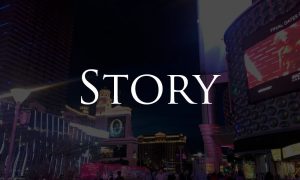
Top 10 Sovereign Wealth Fund Game-Changers of 2012
Posted on 12/31/2012
2012 proved to be a dynamic year for sovereign wealth funds in terms of policy decisions and investment strategies. Notably, a number of sovereign funds were created, especially in resource rich nations like Angola. Our staff has compiled a list of the top ten game-changers that will set the tone for sovereign wealth funds in 2013.
10.) Sovereign Wealth Bankers
As Western banks are smacked with a surplus of regulations, banks are not lending as much, especially to projects and certain lines of business. Financial institutions are concerned about illiquid investments; Basel III makes it more challenging. Banks are cautious about adding illiquid liabilities on their balance sheets. Sovereign wealth funds have the chance of becoming the new bankers for the next decade. Many are creating offshore entities to begin lending operations.
Sovereign wealth funds are involved in the real estate lending business. For example, Singapore’s GIC was a lender for the resorts that Paulson and other investors owned. When Paulson & Co lost the resorts, Singapore’s GIC purchased them in bankruptcy.
9.) Capital Competition, Spreads Across Continents
The world is competing for capital, more so than ever before. Russia has constructed state investment vehicles like the Russia-Direct Investment Fund (RDIF) to boost their economy and give foreign investors access to opportunities in Russia untouchable in years past. A number of nations in the Middle East are developing policies to attract long-term investments, such as co-investing in government energy infrastructure.
Capital-starved Europe continues to sell off public assets to amass capital to pay down unsustainable deficits. Even, China has removed the QFII barrier for sovereign wealth fund investors to provide long-term capital in their domestic security markets.
8.) Fertilizer, Food and Milk
The world now has around 7 billion people. Population growth, modifications in tastes and preferences, limited resources, and environmental issues are factors pushing up the price of food. Mega institutional investors want access to agriculture and land as an asset class.
Fertilizer is in demand, as farmlands need to increase productivity. The China Investment Corporation invested Uralkali OAO, a global potash producer that possesses five mines and seven ore-treatment mills located in Perm Territory in Russia. There has been sovereign wealth interest in dairy farms in New Zealand. Middle Eastern SWFs and other public pension funds have been purchasing agricultural land and food companies in Latin America.
7.) Investing in Financials in Developing Middle-Class Economies
Singapore’s Temasek Holdings purchased a stake in a November secondary public offering in Turkiye Halk Bankasi AS, a government-owned bank in Turkey. It is Turkey’s second largest state-owned bank by assets. In September 2012, the Government of Singapore Investment Corporation Private Limited was subscribing to a Hong Kong H-share private placement by China Pacific Insurance (Group) Co Ltd (CPIC).
6.) Demand for UK Infrastructure
Airports, the China Investment Corporation and Qatar Holding invested in British airports understanding that transportation is a necessity for a sustainable society. In addition, the UK tends to be open for foreign investment. The purchase prices of those stakes were high, but in the context of parking money, it will yield more than a U.S. treasury bill or be less risky than a Fannie Mae instrument.
5.) Montañas de Oro
Mountains of gold, sovereign investors more so on the central bank side have greatly enhanced their allocation to gold and gold producing assets. The amount is miniscule compared to their other foreign currency holdings, but the percentage allocation for some banks has doubled.
The State Oil Fund of Azerbaijan (SOFAZ) can invest in gold bars that conform to the requirements of the London Bullion Market Association. Up to 5% of their portfolio can be allocated to gold.
4.) Small Cap European Stocks
In early 2012, Norway’s Government Pension Fund Global (GPFG) generated a mandate seeking investment managers for small to mid-cap investments in German, French, Italian, and Greek public stocks.
Some smaller European companies continue to thrive as strong exporters relative to their peers.
3.) Solutions versus Products
Banks and large asset managers are tailoring products and services to the growing client base of sovereign investors. Increasingly, long-term public investors are seeking solutions rather than individual plain-vanilla products to meet their complex needs.
2.) Strategic Partnerships
A number of public investors are trying to be more creative and opportunistic when investing public assets. The Teacher Retirement System of Texas (TRS) approved a US$ 250 million dollar investment in Bridgewater Associates Intermediate Holdings, LP. Funds are continually investing in asset managers or allocating large amounts to select managers.
The Alaska Permanent Fund Corporation (APFC) continues to execute on their mini-CIO initiative.
1.) Core Real Estate
Sovereign wealth funds are investing large amounts of capital into real estate, trying to chase a shrinking yield. The State Oil Fund of Azerbaijan (SOFAZ) made three real estate investments in the month of December in European cities. Norway’s GPFG has moved forward with their plans on buying buildings and portfolios of real estate in low-risk property markets. In November 2012, the Norwegian GPFG bought the Uetlihof office complex in Zurich for 1 billion Swiss francs, or about 6.1 billion kroner, from Credit Suisse.
The Government of Singapore Investment Corporation was part of a partnership to invest in an office tower on 101 California Street in San Francisco. In November 2012, the Winchester House in London was sold to the China Investment Corporation (CIC) and joint venture partner Invesco Real Estate. The transactions in 2012 go on……………..
Keywords: Norway Government Pension Fund Global, GIC Private Limited.
